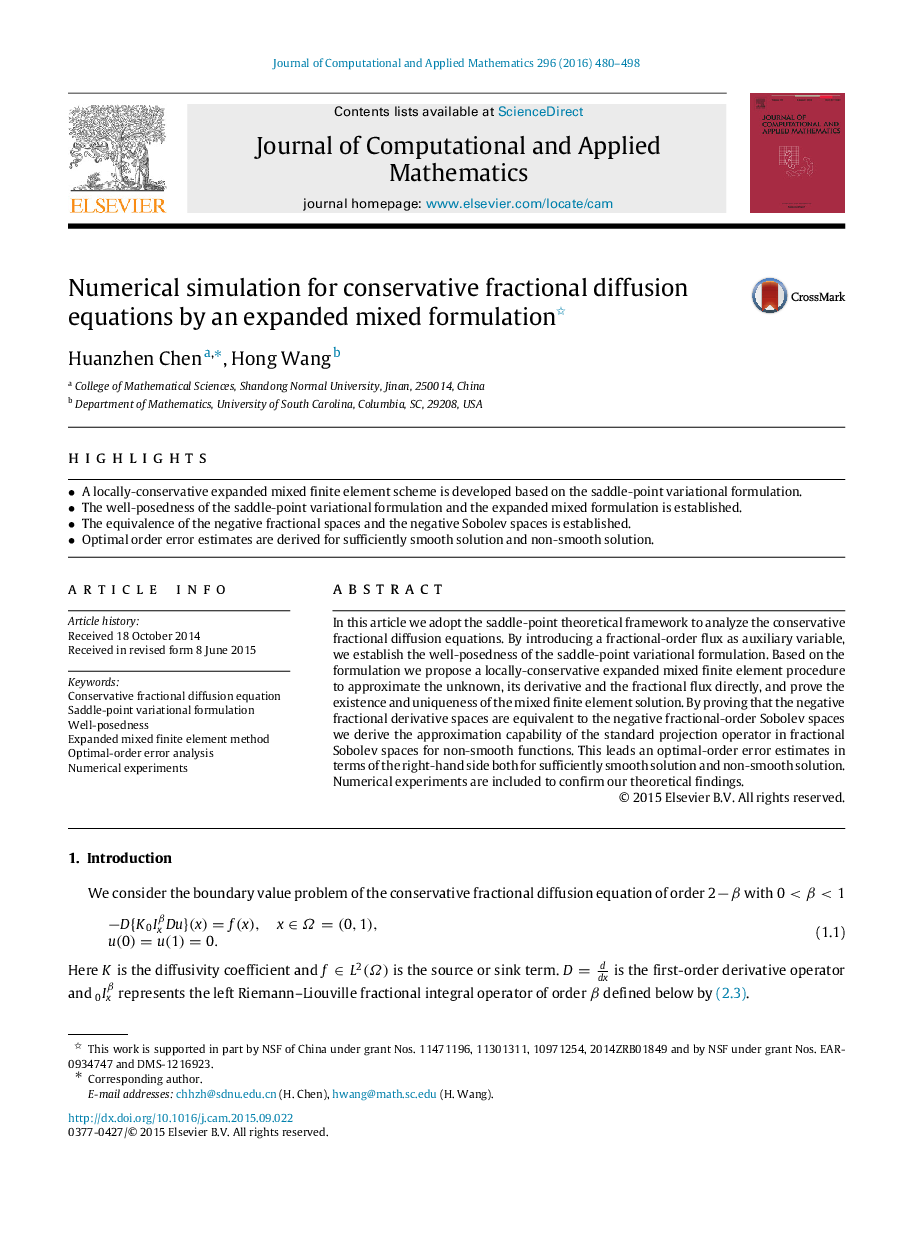| کد مقاله | کد نشریه | سال انتشار | مقاله انگلیسی | نسخه تمام متن |
|---|---|---|---|---|
| 4638186 | 1631995 | 2016 | 19 صفحه PDF | دانلود رایگان |
• A locally-conservative expanded mixed finite element scheme is developed based on the saddle-point variational formulation.
• The well-posedness of the saddle-point variational formulation and the expanded mixed formulation is established.
• The equivalence of the negative fractional spaces and the negative Sobolev spaces is established.
• Optimal order error estimates are derived for sufficiently smooth solution and non-smooth solution.
In this article we adopt the saddle-point theoretical framework to analyze the conservative fractional diffusion equations. By introducing a fractional-order flux as auxiliary variable, we establish the well-posedness of the saddle-point variational formulation. Based on the formulation we propose a locally-conservative expanded mixed finite element procedure to approximate the unknown, its derivative and the fractional flux directly, and prove the existence and uniqueness of the mixed finite element solution. By proving that the negative fractional derivative spaces are equivalent to the negative fractional-order Sobolev spaces we derive the approximation capability of the standard projection operator in fractional Sobolev spaces for non-smooth functions. This leads an optimal-order error estimates in terms of the right-hand side both for sufficiently smooth solution and non-smooth solution. Numerical experiments are included to confirm our theoretical findings.
Journal: Journal of Computational and Applied Mathematics - Volume 296, April 2016, Pages 480–498
